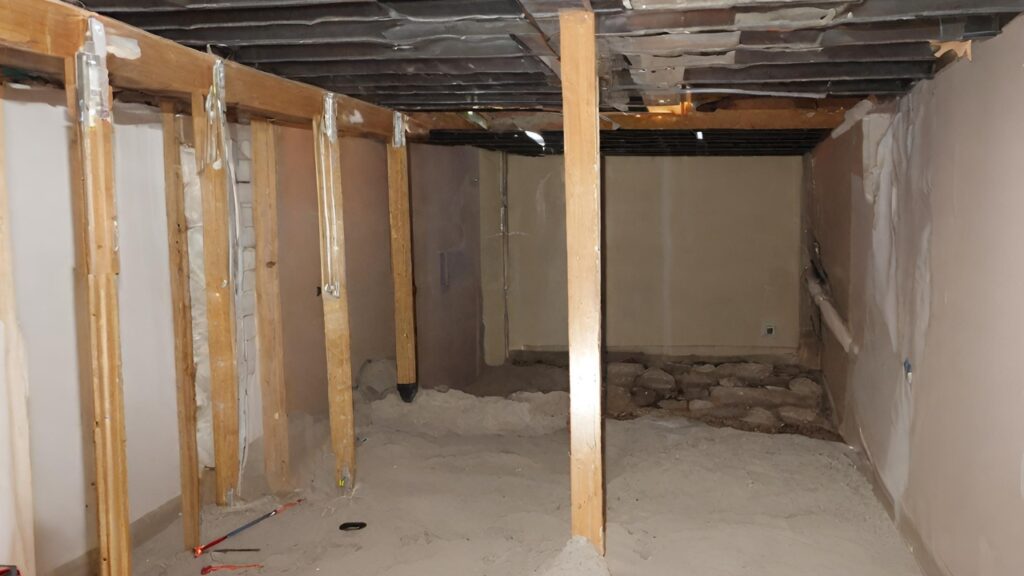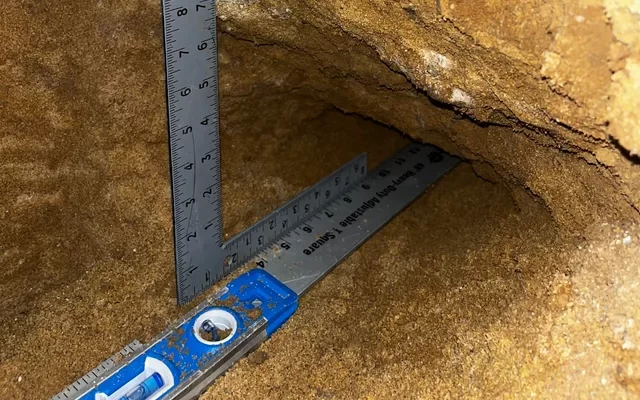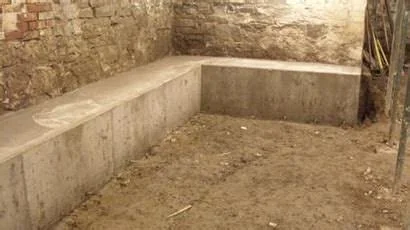
With the boom in the home marketing industry, there is a huge spike in house prices all over Canada. Majority of people can’t afford to buy another property to settle down. To combat this issue, homeowners are inclining towards remodelling their basements on a budget. In this way they are able to have an additional living space without breaking their bank.
But older basements can come with many challenges as well. Because old basements are prone to accumulated sand sinking the foundation, water seepage, moisture, exposed ceiling ducts etc. which makes it very difficult to convert it in the living room. Additionally, low basement ceiling height and less headroom space of older basements makes it impossible to update your living space comfortably and easily.
Therefore, in this article we’ll highlight major advantages and disadvantages of underpinning/benching along with cost so that you can easily decide which one is more suitable for your renovation process.
What is Basement Underpinning?
In simple words, basement underpinning is a common method used to stabilise and strengthen the foundation of your home.
It is used to increase the roof height of your basement, which enables you to convert that space into a more spacious living space. However, basement underpinning is an expensive and time taking procedure and it should be carried out only by a certified professional inorder to avoid any potential issues later on.
If you have low basement ceiling height, underpinning is used to dig out the foundation footing. After that, it is again dug out to additional depth and new footings are installed. Afterwards, contractors can build new flooring and new walls. In this manner, you can have an increased ceiling height and more space to transform your basement into an apartment or into any functional space.

What is benching?
Benching is another method to increase roof height while finishing your basement. In benching, also known as bench footing, a new ledge or bench is placed against the old foundation inside the perimeter of the basement. It doesn’t involve any digging out but careful excavation needs to be done so that the bench is totally aligned with the angle of the old foundation. Then the foundation is lowered down at the bench space.
Minimum digging out makes it a faster and cheaper option than underpinning the basement. However, the inside bench can take up square footage of the space within the basement.

Which one is right for you? Underpinning vs benching.
You need to consider various factors before choosing between the two. For example:
- What’s my budget range and what will be the usage of my basement?
- What is the current condition of my foundation and ground on which it is built on?
- Am I looking for a more aesthetic appeal or my basement really needs a big space to run my errands?
After analyzing all these points, you can consult a professional basement lowering contractor in Canada and get a detailed plan of your space.
When should you consider underpinning?
If your basement foundation is compromised, troubled by water infiltration and seepage issues, it is better to go for underpinning. A weakened and unstabilized foundation is a safety hazard and harms the structural integrity of the overall home. So if your basement is suffering from excessive cracks in floors and walls, that means it can be a flooded basement. To overcome this, underpinning your basement is a better option for you.
Advantages and Disadvantages of Underpinning a Basement in Toronto?
Pros
- Solidify the foundation of your home and prevent it from excessive cracks due to water leakage and moisture problems.
- It enhances the structural integrity and durability of your basement and secures it from likely deterioration and potential damages in future.
- Underpinning increases the basement ceiling height and headroom area so that you can make most of your basement space like installing new windows to let natural light into your basement.
- An underpinned basement with more open living space can be a great selling point and it boosts the value of your property by giving you an edge over your competitors.
- While lowering the basement and increasing roof height, it leaves the space to install and upgrade lighting fixtures and repair any wiring/electric issue easily.
- A necessary underpinning can be useful to fulfil legal basement requirements in Ontario.
- Underpinning also allows to have more space to convert your basement into multifunctional zones such as home gym, compact basement kitchen or a family room.
Cons
- Basement underpinning is a very extensive and time consuming task which may take more than the expected timeline.
- Cost of underpinning the basement in Toronto can be slightly higher than your expectations and can burden your pocket specially if you have a huge basement.
When should you choose benching?
Benching is more suitable if your basement is only suffering from drainage and moisture problems. If you have a strong foundation and you don’t want to add another story in your home then you should choose benching. Additionally if you have a limited budget for basement finishing project, it is the right choice for you.
Advantages and Disadvantages of Benching Basements in Toronto?
Pros
- Due to less digging and excavation, it is a faster and cheaper basement lowering process than the underpinning.
- A concrete slab bench inside the perimeter of the basement along the walls can prevent the basement from flooding and seepage problems.
- If you have a damaged foundation or unwanted moisture, benching can tackle these issues and strengthen the structural integrity.
- Bench or ledge can be used as a sitting area, an additional storage space or a compact entertainment zone.
- It can shield the space and retain foundation stability from surrounding sand pressure owing to its slope design.
Cons
- Benching may not be suitable for the basements with high water surroundings and severe seepage issues.
- It can not fully repair the foundation crack and bumps and you will need to invest an extra amount to address those issues separately.
- Bench footing can be a space invader and many homeowners may not find it visually pleasing.
- The limited space due to the bench may have limited choices to be converted into a more aesthetic and functional area.
- If you are interested in basement remodelling on a budget, go through the cost of underpinning vs benching calculator and embark on a journey of splendid renovation in style.
How can you choose between underpinning the basement vs benching the basement?

There are several scenarios which should be kept in mind while deciding which one is more suitable for your basement lowering project. Let’s look at some of them:
Want to keep minimum renovation with a limited budget on hand? Go for benching
If you have a specific cost range and don’t want to exceed your budget, then choose benching. It is quite inexpensive and pocket friendly than underpinning which can cost you hundreds and thousands of dollars.
Need to increase ceiling height without compromising your space? Choose underpinning
Underpinning is a much suitable option if you don’t want to reduce your space and increase ceiling height simultaneously. Bench or ledge along basement walls can take up space which can be used as storage space or laundry. So underpinning is a good option.
Do you face a time limit and need your renovation fastly and timely? Say yes to benching
Benching does not require extensive excavation and digging out like underpinning. This makes benching a more appropriate choice if you are looking for a quick renovation.
Is your foundation weak and exposed with excessive cracks? Select benching
If your basement is full of cracks with damaged and fragile foundation, then opt for the benching process. It will be suitable to not tamper with weak foundations which may result in ruining the whole property. So choose a bench to fortify your basement without the risk of property collapsing.
Do you have a sharing wall with your neighbour? Choose benching.
Your neighbor might not be comfortable with huge excavations. So it’s better to choose benching without disrupting the peace of your neighbor.
Choose us to increase your basement ceiling height?
Whether you choose benching or underpinning your basement, you should consult a certified contractor to manage all the process professionally. We are a certified company of Canada, experts in providing the best basement lowering solutions. So reach out to us today and let us handle your underpinning process with expert consultation and meticulous attention to detail.


